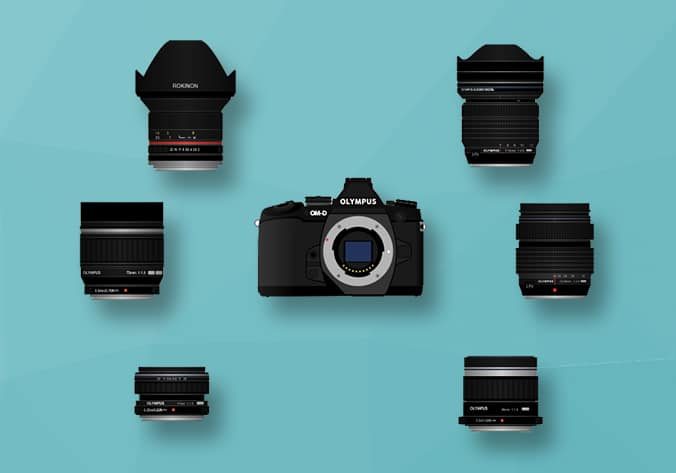
Best Micro Four Thirds Lenses
Micro four thirds lenses have numerous advantages over their counterparts. Check out this in-depth review of the top micro 4/3 lens options.
Camera Gear Guides | Lens Guides | By Mark Condon and Ana Mireles | Last Updated: February 20, 2025
Shotkit may earn a commission on affiliate links. Learn more.
If you’re looking for Micro Four Thirds lenses, you’re definitely not alone.
The ‘MFT’ or ‘Micro 4/3’ system has witnessed a huge growth in popularity. I’ve been on the hunt for years and just finished this updated list of the best ones.
Micro Four Thirds cameras deliver many of the benefits of the latest APS-C mirrorless cameras, all in a more compact package (when paired with equivalent lenses) and at significantly more competitive prices.
Due to the handy 2x crop factor of the sensor, micro 4/3 lenses are more compact and lightweight in their quality and range.
Delivers exceptionally sharp and crisp images with a lightweight, compact, and dust-resistant construction.
![]()
Thanks to the size of the Micro Four Thirds camera sensor, you’re suddenly able to carry a 70-200mm f/2.8 equivalent lens in your jacket pocket!
The biggest benefit of MFT mount lenses is that they can be used on both Panasonic or Olympus cameras, regardless of the brand.
This means photographers can choose from a wide selection of third-party options or even use adapters for DSLR or mirrorless lenses.
With such a huge variety of great ‘glass’ on offer, let’s see the best options this year.
What is a Micro Four Thirds Lens?
| Image | Product | Features | |
|---|---|---|---|
 | Panasonic Leica DG 15mm f/1.7OUR #1 CHOICE |
| Check AMAZON Price → Check B&H Price → |
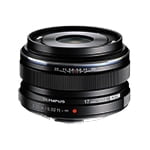 | Panasonic 25mm f/1.7BEST 50MM PRIME |
| Check AMAZON Price → Check B&H Price → |
 | Panasonic Lumix 12-35mm f/2.8 II ASPHBEST VALUE |
| Check Price → |
 | Olympus 60mm f2.8 MacroHIGH QUALITY |
| Check AMAZON Price → Check B&H Price → |
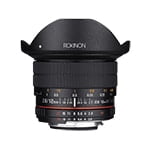 | Rokinon 12mm f/2BEST WIDE ANGLE |
| Check AMAZON Price → Check B&H Price → |
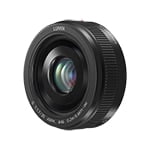 | Panasonic 20mm f/1.7 IIMOST COMPACT |
| Check AMAZON Price → Check B&H Price → |
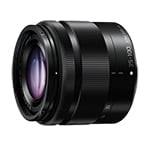 | Panasonic 35-100mm f/2.8 IIBEST LONG ZOOM |
| Check AMAZON Price → Check B&H Price → |
 | Olympus 40-150mm f/4-5.6GREAT VALUE |
| Check AMAZON Price → Check B&H Price → |
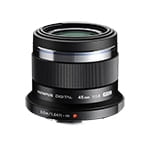 | Olympus 45mm f/1.8BEST BOKEH |
| Check AMAZON Price → Check B&H Price → |
Micro Four Thirds lenses are produced for MFT cameras by several manufacturers, including Panasonic, Mitakon, Samyang, Sharp, Sigma, Tamron, Tokina, and Olympus, with all lenses being compatible with all MFT camera bodies.
This makes the format a popular choice with photographers, with multiple lens/body manufacturers offering multiple products at competitive prices, all interchangeable across the MFT system.
This guide to the best micro 4/3 lenses is geared mostly to generalist, all-purpose lenses that I deem most useful and best value for money for a wide range of situations.
Don’t worry, though. While being great all-rounders, some of these choices also excel in specific types of photography – such as macro. I’ll let you know when reviewing them.
I’ve also included a range of prime and telephoto focal lengths, using the 35mm equivalent focal length as a reference point to the 2x crop factor of MFT lenses.
I’ve used Olympus MFT cameras a lot in the past, testing a range of lenses (thanks, Olympus Australia) to decide on the ones to include in the selection below.
If you want to know more about the MFT format, check out this article. If, instead, you’re screaming at the screen, “What micro four-thirds lenses should I buy?!” I’m glad you asked so politely – let’s dive into the reviews!
Panasonic Leica DG 15mm f/1.7
Aperture: f/1.7
Focal Length: 15mm (30mm equivalent)
Dimensions: 2.26 x 1.4 (57.5 x 36 mm)
Weight: 115 g (0.25 lb)
In a previous version of this list, I recommended the Olympus 17mm f/1.8. Unfortunately, this isn’t in production anymore – however, I believe the Panasonic Lumix 15mm f/1.7 ASPH is a superb alternative.
The price range is similar, but if you prefer a premium option and have the budget, check out the Olympus M.Zuiko ED 17mm f/1.2 Pro.
The Panasonic Lumix 15mm f/1.7 ASPH still fits Olympus cameras – for example, the Olympus OM-D EM 5 Mark II (reviewed here).
If you’ve only shot with a zoom lens on the end of your MFT camera, shooting with a prime lens like this one will really open your eyes. Aside from being faster (larger aperture) than any of the Micro Four Thirds zooms available, it’s also sharper and faster to acquire focus.
One of the main reasons this is such an excellent lens is because it delivers crisp images with minimal distortions even when shooting at the maximum aperture. You can expect sharpness across the entire frame when shooting at f/2.8-4.
Another advantage is that the Panasonic Lumix 15mm f/1.7 ASPH is splash-proof and dust-resistant, making it the perfect lens for most common situations.
However, it doesn’t have the protection of the Pro lenses from Panasonic or Olympus. So, it may resist light rain, but it’s not suitable for harsh environments.
I turned to MFT systems for portability reasons. As any DSLR or mirrorless user will tell you, you’re not doing your back any favors when carrying this type of gear all day long.
However, the weight benefits of an MFT camera are directly related to the lens you attach to it. The Panasonic Leica DG 15mm f/1.7 is lightweight and compact. So, you can have all the comfort without compromising quality – that’s why I love it.
The f/1.7 aperture allows you to shoot in low-light situations without needing a tripod or raising the ISO to a point where noise becomes problematic.
Also, it creates a pleasant bokeh pattern thanks to its round blades. While wide-angle lenses aren’t particularly used to achieve this effect, it’s a plus that you can get good results with the Panasonic Leica DG 15mm f/1.7.
I also recommend this lens due to its versatile focal length – 15mm is equivalent to roughly 30mm in full frame. This allows you to shoot anything from portraits to landscapes. I can travel with only this lens and not miss out on anything.
Even if the Panasonic Leica DG 15mm f/1.7 has a few years on its back, it’s still in production, and it’s one of the best choices for Micro Four Thirds cameras.
Panasonic 25mm f/1.7
Aperture: f/1.7
Focal Length: 25mm (50mm equivalent)
Dimensions: 2.39 x 2.05 in. (60.8 x 52 mm)
Weight: 125 g (0.27 lb)
Most photographers have one of two favorite focal lengths – 35mm or 50mm. As I mentioned above, I’m a huge fan of short wide-angles (30-35mm), but many of my friends shoot 90% of their pictures with a ‘nifty-fifty‘ of some sort.
If you’ve got a Micro Four Thirds camera, there are a few 50mm-equivalent options on the market. All of them are excellent performers, which makes the choice to recommend just one rather tricky.
In my own experience of using each variant for a week, I’ve chosen to recommend the Panasonic 25mm f/1.7 – it may not offer the absolute best image quality of all the options, but bang-for-the-buck, it’s unmatched.
The Panasonic 25mm f/1.7 is the MFT equivalent of DSLR shooters’ budget nifty-fifties – razor sharp, fast to focus, small, lightweight, and excellent value for money. This makes it one of the best micro 4/3 lenses in the market right now.
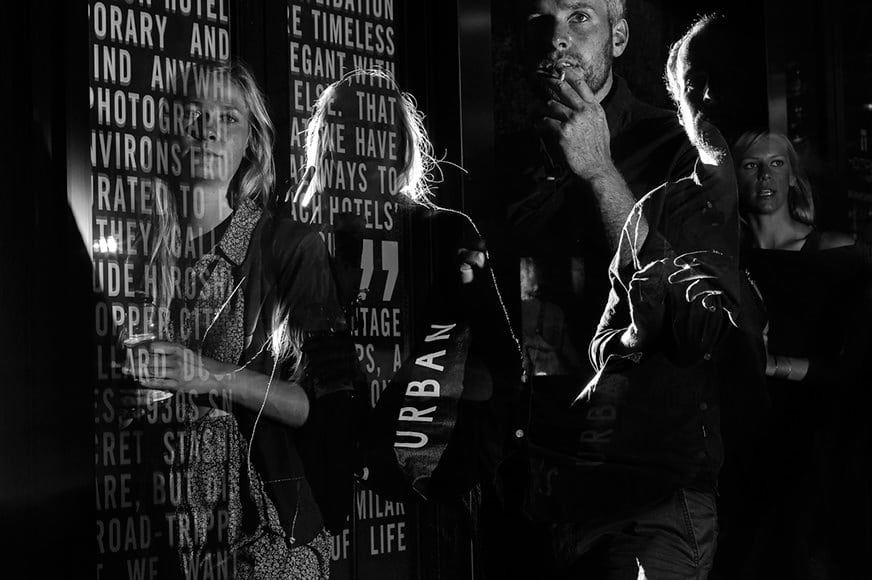
Panasonic GM1 + Panasonic 25mm f/1.4 | © Satoki Nagata
The equivalent 50mm field of view produces almost no distortion, making it a flattering option for portraits.
The large maximum aperture of f/1.7 allows enough light in to use your micro 4/3 camera after dark without a flash.
The rounded 7-blade diaphragm construction means bokeh is soft, creamy, and distracting. Separating your subject from background distractions becomes very simple indeed.
You can also expect edge-to-edge sharpness at all aperture settings and no discernible difference in sharpness when shot wide open as opposed to when stopped down.
For such an affordable MFT lens, the Panasonic 25mm f/1.7 offers a lot in terms of high-quality build despite being so lightweight.
The metal mount provides durability for active use and uses multi-coated lens elements that minimize ghosts and flare to further enhance its shooting performance.
All in all, if you’re looking for a 50mm equivalent prime lens to really extend the potential of your Micro Four Thirds system, look no further than this.
The alternatives may seem tempting – I’m talking about the Panasonic Leica Summilux 25mm f/1.4 and the Olympus 25mm f/1.8. However, the cost savings of this little Panasonic marvel make it the clear winner.
Panasonic Lumix 12-35mm f/2.8 II ASPH
Aperture: f/2.8
Focal Length: 12-35mm (24-70mm equivalent)
Dimensions: 2.7 x 2.9 in. (67 x 73 mm)
Weight: 300 g (0.6 lbs)
Now, I’ve recommended a couple of excellent prime lenses; it’s time to tackle a great micro four-thirds zoom lens.
It’s not a budget lens but offers very good value for money.
With the Panasonic 12-35mm f/2.8 II ASPH attached to your camera, you’ll be able to shoot everything from a wedding all the way down to your holiday with the kids… all without moving your legs much!
Even though I love prime lenses, I have to admit that using a 24-70 equivalent lens like this Panasonic is a huge time-saver and makes photography a lot easier!
If you are tight on budget, look for the first version of the lens – you’ll probably need to get it second-hand. The weather-sealing is not as good, but there really isn’t that much difference in performance.
Whichever version of this micro 4/3 lens you choose to go with, you can enjoy the immediate benefits of having the smallest and lightest 24-70mm f/2.8 equivalent zoom lens available anywhere! Both versions have roughly the same size and weight – v.2 is 5 grams lighter.
If you’re used to shooting with a kit lens or cheaper zoom, the fixed f/2.8 aperture on this Panasonic will be a revelation.
Micro 4/3s sensor cameras struggle a lot in low light compared to cameras with larger sensors. Having a fixed aperture of f/2.8 will mean you can shoot with a slower shutter speed first without diving into your MFT camera’s limited ISO capabilities.
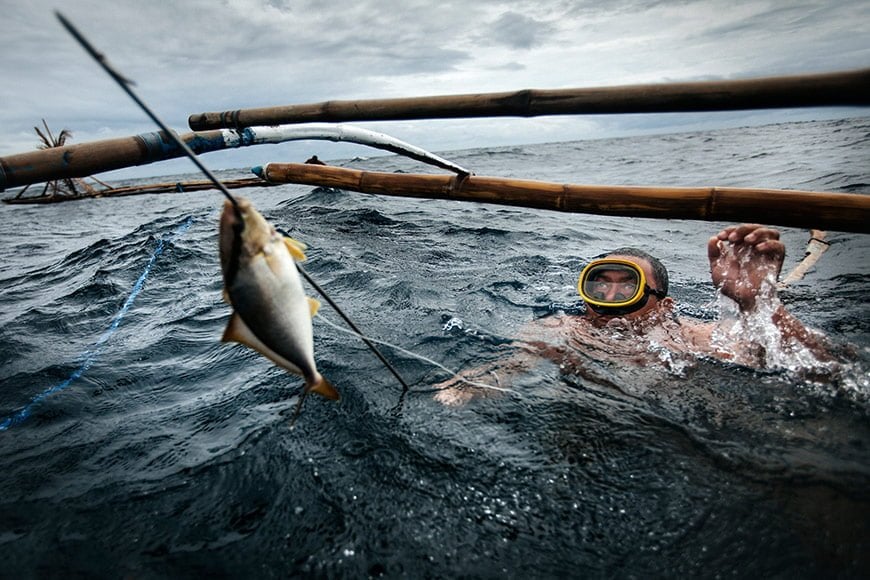
Panasonic GX8 + Panasonic 12-35mm f/2.8 | © Mitchell Kanashkevich
As an added bonus, the Panasonic 12-35mm f/2.8 II ASPH offers an improved optical image stabilization compared to the first version – which can mean the difference between a blurred and a sharp hand-held shot in low light.
The plastic build won’t win any awards, but its weather-sealing and diminished weight make the choice of material completely justifiable. This lens in metal would easily outweigh most cameras.
As an all-round MFT zoom lens, the Panasonic 12-35mm f/2.8 II ASPH is one of the best choices.
Olympus 60mm f/2.8 Macro
Aperture: f/2.8
Focal Length: 60mm (120mm equivalent)
Dimensions: 2.2 x 3.23in. ( 56 x 82mm)
Weight: 0.40lbs (185 g)
If you’re looking for a compact telephoto lens with macro capabilities, the Olympus 60mm f/2.8 Macro is a great choice.
Whether you enjoy portrait or macro photography, the Olympus 60mm f/2.8 will become your best friend. Also, it’s so compact that you won’t believe you’re carrying a telephoto lens.
A 60mm in the MFT system is equivalent to a 120mm – this might not be such a common focal length, but it’s perfect for portraits. You won’t get any distortion on your subject, and it will create a nice subject-to-background separation if used with wide apertures.
For macro photography lovers, you’ll enjoy a focusing distance of 19cm (2.4 in) and a magnification of 1x (2x equivalent). It’s also perfectly compatible with the Olympus focus stacking function – so you can get your subjects perfectly sharp.
The Olympus 60mm f/2.8 is dust and splash proof and ice resistant. So you can use it confidently outdoors.
Its compact and lightweight design combined with the f/2.8 aperture allows you to use it handheld for macro photography or low-light situations where other lenses require a tripod or a flash.
However, if you need it, you can pair it with an FL-900R flash or an M.Zuiko STF-8 Twin Macro flash.
While the bokeh it creates isn’t as pleasing as the ones from other lenses, the image sharpness will amaze you at any aperture.
Even if this lens isn’t as new, you won’t regret bringing it with you on any adventure – nature and travel.
Rokinon 12mm f/2
Aperture: f/2
Focal Length: 12mm (24mm equivalent)
Dimensions: 2.85 x 2.33 in. (72.5 x 59 mm)
Weight: 0.54 lbs (245g)
Before you get all excited about the prospect of owning one of the cheapest Micro Four Thirds wide-angle lenses, hold your horses – this one’s manual focus.
Normally, I’d never recommend a manual focus lens for stills photography, especially when there’s an excellent auto-focus equivalent available (in the Olympus 12mm f/2).
However, this time, it’s completely justifiable due to three main reasons.
First off, let’s get the price out of the way. The Rokinon 12mm f/2 (aka Samyang 12mm) is half the price of the Olympus equivalent. Even if you use a wide-angle lens every day of the year, such a price saving is a little hard to ignore. This is quite simply the best wide angle lens for your money.
Second, the focus issue. Video shooters may still be able to deal with MF, but for most of us, AF is always worth the price!
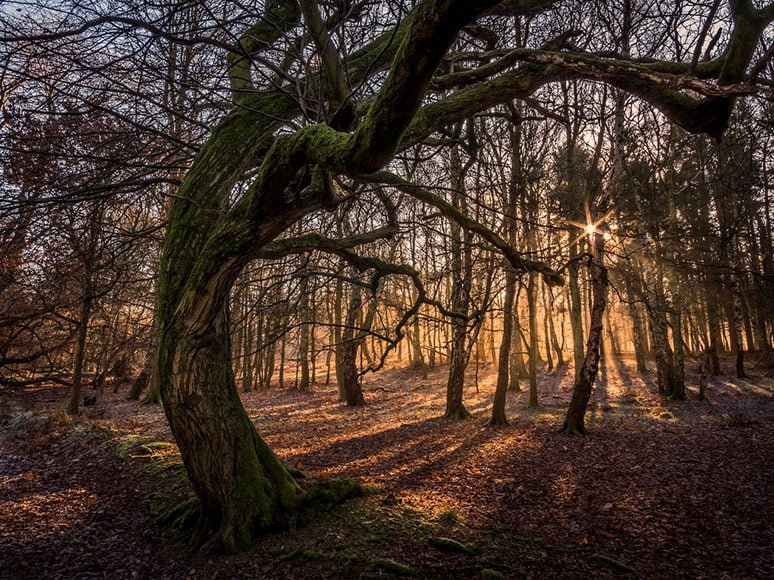
Panasonic GH3 + Rokinon 12mm f/2 | 1/6 f/2 ISO125 | © Damian Ward
However, when we’re talking about a wide angle lens (a 24mm equivalent), MF starts to become more acceptable. Typically, wide-angle lenses afford a lot more leeway between in/out of focus areas, especially when stopped down to smaller apertures.
Shoot your subject from 3m away using the Rokinon 12mm f/2 at f/5.6, and you can miss focus by a whopping 1.8m and still have them in focus!
Even when shot wide open, the in-focus area is a forgiving 1.1m – have a play around with this handy tool to see what I mean.
If you’re more interested in shooting landscapes or architecture with your MFT wide-angle lens, you can set the Rokinon 12mm f/2 to focus at infinity and be safe in the knowledge that every shot from a distance will be in pin-sharp focus.
The final reason for including this manual focus lens in my roundup of the best Micro Four Thirds lenses of the year is its image quality.
I found sharpness at the center to actually be better than the more expensive Olympus equivalent, and images are vibrant and contrasty at all apertures.

Panasonic GH3 + Rokinon 12mm f/2 | 25s f/2 ISO 125 | © Damian Ward
The maximum aperture of f/2 lets in enough light for evening shots without a flash, but if you consider that most wide-angle scenery work should make use of a good tripod, there’s less need for a super fast aperture.
f/2 is still nice to have, though, and offers flexibility for handheld work, even when the sun starts to drop. With the high ISO limitations of the MFT sensor, having a lens with a wide maximum aperture is always a good thing…
The only downside of the Rokinon 12mm f/2 is its bulky nature. However, wide-angle prime lenses aren’t typically attached to your camera all day long like a 35mm/50mm lens might, so this slight trade-off is fine for most people.
A manual focus MFT lens may sound like a drag, but with wide-angle, this is only an issue when photographing subjects at very close distances. The rest of the time, you’ll think you have an AF lens attached anyway.
Panasonic 20mm f/1.7 II
Aperture: f/1.7
Focal Length: 20mm (40mm equivalent)
Dimensions: 2.48 x 1 in. (63 x 25.5 mm)
I must admit I only came across this dinky little MFT prime lens recently after a recommendation from a friend.
After having shot with the 17mm Olympus for so long, I’d become oblivious to the fact that there were excellent alternatives out there… and the Panasonic 20mm f/1.7 II is among the best MFT lenses.
If you’ve got a small MFT camera, attaching a big lens to the front kind of defeats the benefits of the format if you ask me. The camera will become unwieldy to shoot and completely ruin the balance in your hand.
Attaching a micro-four-thirds pancake lens like the Panasonic 20mm f/1.7 II, on the other hand, is a match made in heaven for small MFT bodies.
Even if I’m using a larger MFT camera, such as the excellent Panasonic GH5, I’d still reach for this lens first – it’s just so dinky that it makes any camera body feel great!
Despite weighing less than a pack of cards, the Panasonic 20mm f/1.7 II is surprisingly well-built, with an all-metal body and mount that can take some knocks and drops. This is the main difference between the plasticky first version and this newer V2 model.
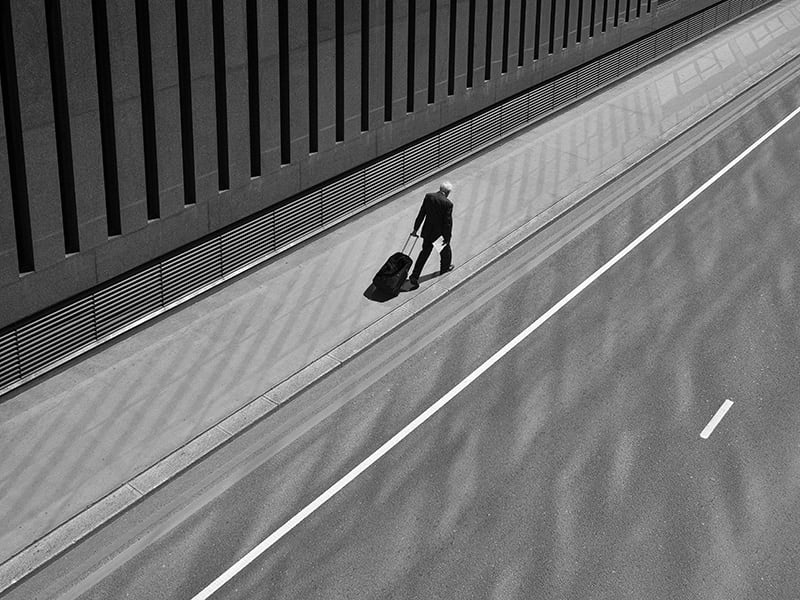
Olympus OM-D E-M5 + Panasonic 20mm f/1.7 | 1/800 f/8 ISO 200 | © Rupert Vandervell
20mm gives a somewhat unorthodox 40mm equivalent field of view, but it’s a focal length that will grow on you the more you use it. Stuck in between two of the most versatile focal lengths, 40mm is actually the best of both worlds.
The f/1.7 aperture is a big help in low light, with MFT cameras typically struggling to produce clean images at higher ISOs.
The image quality is exceptional for such an affordable lens, and the price point makes it an ideal option for beginners as well as those more invested in the micro 4/3 system.
The bokeh at f/1.7 is creamy and smooth, and allows you to separate your subject from the foreground or background with ease. As with most MFT lenses, overall sharpness across the frame peaks at about f/4~5.6.
Seven rounded aperture blades help to create the creamy bokeh, providing circular out-of-focus highlight elements across the frame.
The color rendition is neutral, with pleasing skin tones straight out of the camera. There’s also virtually no distortion.
As for auto-focus performance, it’s something of a mixed bag. When paired with the excellent Olympus OM-D EM 10 Mark II, (a camera with typically lightning-fast AF), I found that the Panasonic 20mm f/1.7 II hunts for focus quite regularly, especially in low light.
For this reason, I wouldn’t recommend it for fast-moving subjects or street photography. However, if you don’t mind the occasional slow focus time, its combination of portability and stellar image performance makes it a great micro 4/3 lens for travel in particular.
Just watch out for showers since it isn’t weather-proof, but you can’t have everything, especially at this incredibly attractive price point.
All in all, the Panasonic 20mm f/1.7 II is the lens you need if you’re on a tight budget. It’s smaller, lighter, cheaper, and has very similar image quality to its more expensive competitors. Definitely one of the best budget micro-four thirds lenses out there.
Panasonic 35-100mm f/2.8 II
Aperture: f/2.8
Focal Length: 35-100mm (70-200mm equivalent)
Dimensions: 2.7 x 3.9 in. (67 x 99 mm)
Weight: 320 g (0.7 lbs)
When talking about the most versatile Micro Four Thirds zoom lenses in any category, the Panasonic 35-100mm f/2.8 II is a tough one to beat… although strangely enough, it manages to fly somewhat under the radar.
This is Panasonic’s premium fast telephoto zoom lens, equivalent to a 70-200mm in full frame terms. As such, it’s the perfect complement to the aforementioned Panasonic 12-35mm f/2.8 II ASPH – with these two lenses tucked away neatly in just a small camera bag, you can shoot pretty much anything you could ever want.
Compared to a full-frame camera’s 70-200mm f/2.8 lens, the Panasonic 12-35mm f/2.8 II is less than half the size and weight, making for an altogether more manageable (and enjoyable!) shooting experience.
It’s also less than half the price – a fact that’s nothing to scoff at, particularly as it puts this traditionally ‘exotic’ zoom focal range into the hands of non-professionals or anyone who’s unlikely to drop big bucks on a lens.
Despite its relatively light weight for a medium-long range telephoto zoom lens, the Panasonic 35-100mm f/2.8 II is solidly built and weather-sealed. Pairing it with a weather-sealed Panasonic GH4 or Olympus OM-D EM 1 creates an ideal all-weather shooting solution.
Focusing is lightning fast in good light and actually very impressive in low light, too, making the Panasonic 35-100mm f/2.8 II a solid event photography lens for MFT shooters.
Paired with the Panasonic 12-35mm f/2.8 II (a 24-70mm equivalent), it’s also all you’d ever need to shoot a wedding, sports day, or anything that requires a wide range of focal lengths to be covered in as short a time as possible.
Images are sharp and clear throughout the frame, as you’d expect from an MFT lens from Panasonic’s professional range. There’s also no visible distortion throughout the zoom range.
The real standout feature, though, is the ‘Power O.I.S’ – image stabilization that provides an additional 4-stops of aperture flexibility and a huge benefit for video shooters.
In practice, this means that even when zoomed in at 100mm, you can hand-hold the Panasonic 35-100mm f/2.8 II at much slower shutter speeds than would be normally possible, thus allowing you to keep your camera’s ISO as low as possible.
All in all, this is one impressive telephoto lens at a very manageable size/weight. If you’re used to spending thousands on 70-200mm f/2.8 DSLR equivalents, you’ll be very happy at the price of this Panasonic, too.
Olympus 40-150mm f/4-5.6
Aperture: f/4-5.6
Focal Length: 40-150mm (80-300mm equivalent)
Dimensions: 2.5 x 3.3 in. (63.5 x 83 mm)
Weight: 0.48 lbs (220 g)
Normally, I wouldn’t recommend a ‘slow’ zoom lens without a constant aperture, especially in the Micro Four Thirds format.
However, I’ve made an exception with the Olympus 40-150mm f/4-5.6, an MFT telephoto lens that offers great performance at a bargain price.
As an 80-300mm equivalent zoom, this lens is obviously suited for shooting faraway objects or compressing the background behind your subject.
Used wide open at its widest angle (f/4 at 40mm), the Olympus 40-150mm f/4-5.6 is impressively sharp and becomes even sharper if you have enough light to be able to stop the aperture down to f/5.6.
This makes it equally suited for portraits, whereby the 40mm gives a flattering 80mm field of view.
The mid-range (49-70mm) of this MFT telephoto is where it really shines, with good performance at f/4 and sharpness increasing overall at f/5.6 and remaining constant at around f/11.
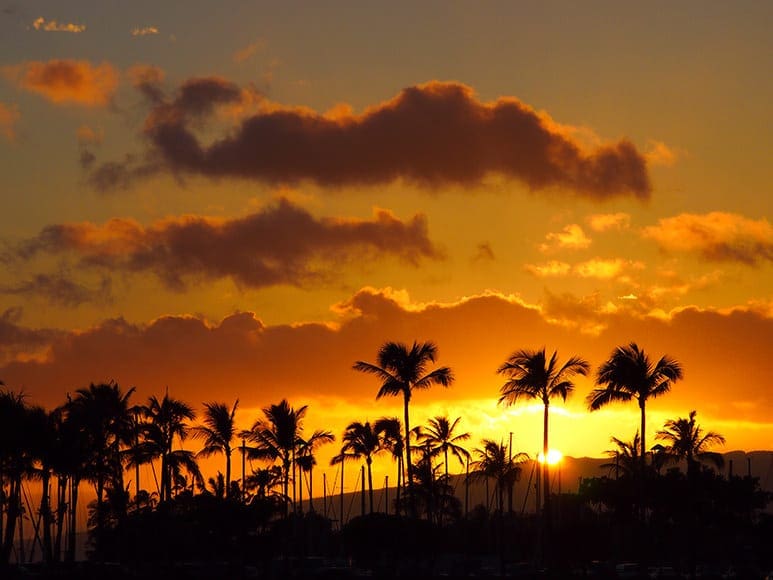
Olympus PEN E-P3 + Olympus 40-150mm f/4-5.6 | 1/640 f/9
From 100-150mm, sharpness is still good, but I have to say that it’s not quite as sharp as the wider end of the spectrum. This is common in this price range.
If you’re after stellar image performance right throughout the zoom range (and a constant, fast aperture), go for the Olympus 40-150mm f/2.8 – an incredible lens, but bulky and expensive.
On the topic of price, the Olympus 40-150mm f/4-5.6 really is unbeatable value for money – where else can you get such a long-range telephoto micro 4/3 lens for under $130?!
Know that you’re getting a helluva lot of lens for an absolute bargain price.
Autofocus speeds are excellent, with the lens locking onto a subject well within a second through its entire focusing range.
Being able to fit a 300mm equivalent zoom lens into your jacket pocket is nothing short of incredible, and highlights a major advantage of the micro 4/3 format over APS-C or full frame.
As you’d expect from such a lightweight, inexpensive lens, build quality is basic, with the construction being almost completely plastic.
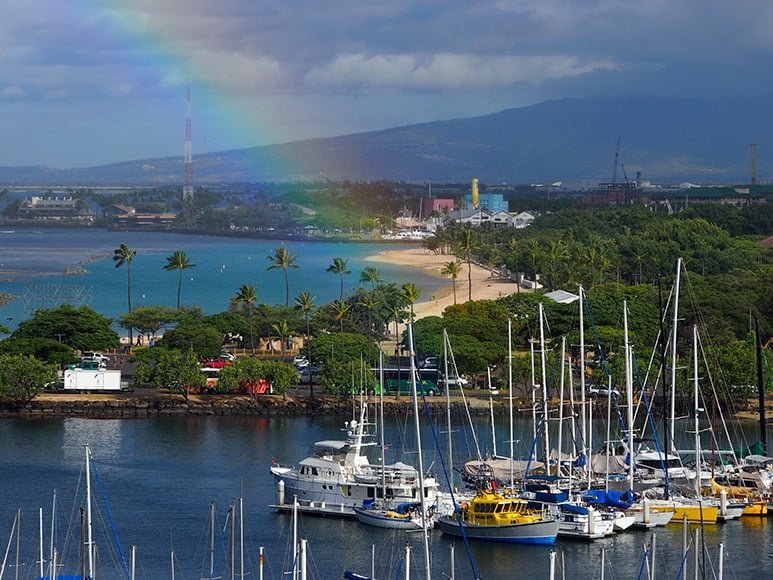
Olympus PEN E-P3 + Olympus 40-150mm f/4-5.6 | 1/800 f/8
One other thing to consider, of course, is the aperture, which will certainly be limiting in low light. Even if you have one of the professional Micro Four Thirds camera bodies (such as the excellent Panasonic GH5), you can’t really rely on clean, high ISO performance, meaning that you’ll definitely struggle to shoot at f/4 with shutter speeds around 1/100.
The Olympus 40-150mm f/4-5.6 is intended for daylight shooting, so as long as you’re alright with this, you’ll be good to go unless you’re willing to use a tripod.
There are a few alternative long-range MFT zoom lenses, but for its price:performance ratio, this one is the best by far.
If you’re a professional wildlife or sports photographer, you’ll need to cough up a lot more for the f/2.8 version, but as long as you’re happy to shoot in decent light, the Olympus 40-150mm f/4-5.6 delivers excellent bang for the buck in an impressively compact package.
Olympus 45mm f/1.8
Aperture: f/1.8
Focal Length: 45mm (90mm equivalent)
Dimensions: 2.2 x 1.8 in. (56 x 46 mm)
Weight: 0.25 lbs (116 g)
For many, the Olympus 45mm f/1.8 is the preferred lens for portrait photography. As a 90mm equivalent, it’s perfect for flattering head/full-body shots.
The combination of a mid-range focal length and a fast f/1.8 aperture delivers the creamiest, most shallow depth of field you’re likely to see from any of the MFT prime lenses.
For those Micro Four Thirds naysayers who don’t believe shallow depth of field is possible with such small sensors, think again! This is the lens that says otherwise…
While there are several other f/1.8 (and faster) MFT lenses available, using slightly longer focal lengths such as this 90mm equivalent really helps to produce subject separation akin to more expensive (and bigger!) APS-C and full frame sensors.
At less than the weight of a paperback book, the Olympus 45mm f/1.8 is a perfect lightweight lens for travel or for everyday walk-around shooting.
At f/1.8, this lens is nice and sharp, with the effect exaggerated due to the pleasing bokeh. Stopping down to f/2.8 increases overall sharpness slightly.
f/1.8 will also allow for some low-light photography without resorting to your camera’s flash or compromising the image quality by raising the ISO.
If you’ve got deeper pockets or are a working pro who relies on the shallowest depth of field or is able to shoot in lower light, there’s also the Olympus 45mm f/1.2 PRO.
Optically, the lens is excellent, delivering contrasty images with pleasing skin tones. There’s zero distortion and minimal chromatic aberration.
Interestingly enough, the Olympus 45mm f/1.8 produces zero flares even when shooting directly into the sun – something that many much more expensive lenses fail to accomplish.
Autofocus is lightning-fast and keeps up with the fastest moving subjects surprisingly well. I like the ability to correct focus or enable manual focus override simply by turning the focus ring – every lens should have this useful feature, in my opinion.
As for build quality, the Olympus 45mm f/1.8 is 100% plastic-fantastic!
As for the price, the Olympus 45mm f/1.8 is another bargain lens and a no-brainer for anyone who’s happy to shoot at a fixed medium-range focal length.
If you’re after a micro four-thirds lens for portrait photography, make no mistake – this is the first (and last) lens you’ll likely ever need.
Affordable, lightweight, and small – these are the three main benefits of MFT lenses, and a fast f/1.8 aperture makes this one a great lens to add to your arsenal.
Frequently Asked Questions
Who makes Micro Four Thirds lenses?
You can find Micro Four Thirds lenses from a range of different camera brands, including Kodak, Olympus, Panasonic, Cosina Voigtländer, DJI, Kowa, Xiaomi, Mitakon, Samyang, Sharp, Sigma, Tamron, Tokina, and Veydra.
Are all Micro Four Thirds lenses compatible?
Yes, one of the great things about the Micro Four Thirds system is that you can use any MFT lens on any brand of MFT camera body.
What Micro Four Thirds lenses should I buy?
As with anything camera or lens-related, it depends largely on your needs and preferences. For an all-round lens that’s sharp and versatile, our top pick is the Olympus 17mm f/1.8.
Final Words
In writing this roundup, I’ve had to exclude many excellent Micro Four Thirds lenses for the sake of simplicity. However, I believe the lenses reviewed above represent the best performance for your money.
One of the benefits of the MFT system is the sheer breadth of choice when it comes to lenses, with most of them at much more affordable prices than DSLR equivalents.
Yes, there are many good alternatives out there, but in this list, you’ll find the best options to build yourself an affordable, high-performance photography kit that can keep up with the big boys with their big(ger) sensors ;-)
Delivers exceptionally sharp and crisp images with a lightweight, compact, and dust-resistant construction.
![]()
















